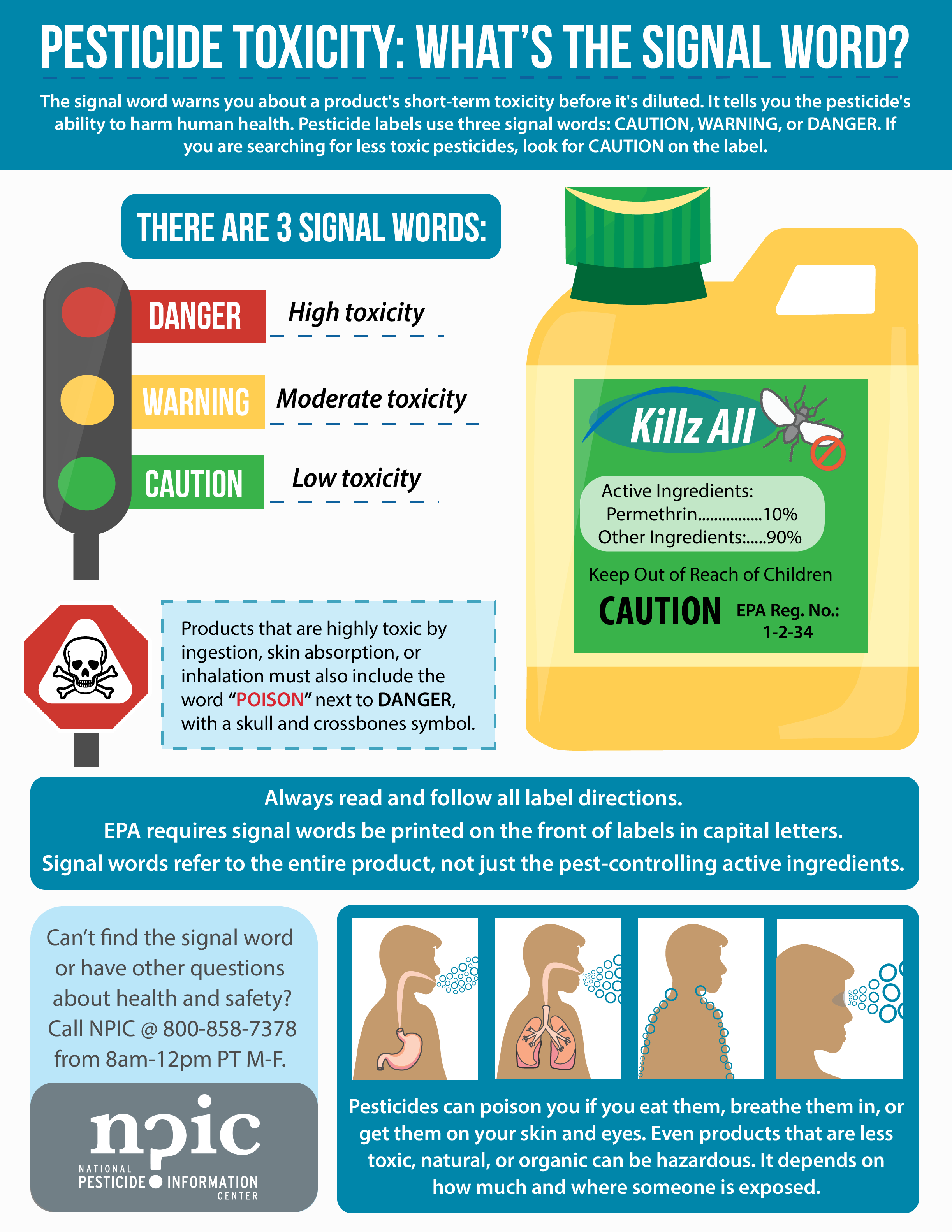Understanding Pesticide Risks
1.800.858.7378npic@oregonstate.edu
We're open from 8:00AM to 12:00PM Pacific Time, Mon-Fri
A to Z

Understanding Pesticide Risks
Many people believe that some pesticides are safe, while others are dangerous. Actually, the words "safe" and "dangerous" are misleading. Any chemical, including any pesticide, can pose risks to people, pets, or the environment. Understanding pesticide risk will help you take steps to minimize it.
The risk of a pesticide depends on two things, exposure (how much?) and toxicity (how poisonous?). The exposure is the amount you get in or on your body, or the amount that is released into the environment. The toxicity of a pesticide is measure of how poisonous it is to people or the environment.
Even products that are low in toxicity can be hazardous if the exposure is high enough. This is the basis for the argument that, "the dose makes the poison." For example, one aspirin is beneficial for pain or certain medical conditions, but too much aspirin could be very hazardous. As the amount of exposure (the dose) increases, so does the risk.
Pesticides often contain more than one ingredient, and each one may have a different toxicity. One easy way to estimate the toxicity of a pesticide product is to look at the signal word. Most pesticides will have either the word CAUTION, WARNING, or DANGER on the label, and that signal word reflects the toxicity of the product:
CAUTION represents the lower toxicity products
WARNING indicates medium toxicity products
DANGER stands for the highest toxicity products
Our page on Minimizing Pesticide Risks provides more information on how to reduce exposure to pesticides.
Additional Information:
Evaluating Pesticide Risk
- Is it Safe? Getting answers from the National Pesticide Information Center - Oregon's Agricultural Progress, Oregon State University
- Pesticide Toxicology, Evaluating Safety and Risk - Purdue University
- Guidance for Human Health Risk Assessments for Pesticides - Environmental Protection Agency (EPA)
- Pesticides and Human Health Risk Assessment - Purdue University
- Pesticides and Ecological Risk Assessment - Purdue University
- Potential Health Effects of Pesticides - PennState Extension
Pesticide Toxicity
- Toxicity of Pesticides - University of Florida Extension
- Toxicity of Pesticides - PennState Extension
- Pesticides and Epidemiology - Purdue University
- Allergy and Pesticides: Ten Questions and Answers - Medical University of South Carolina
- Pesticide Product Toxicity Ratings - Texas Cooperative Extension System
Pesticide Exposure
- Is It Pesticide Exposure or Heat Stress? How to Spot the Difference - Virginia Cooperative Extension
- Reducing Pesticide Exposure in Schools - National Institute for Occupational Safety and Health (NIOSH)
- Questions About Pesticide Exposure - Extoxnet
If you have questions about this, or any pesticide-related topic, please call NPIC at 800-858-7378 (8:00am - 12:00pm PST), or email us at npic@oregonstate.edu.

